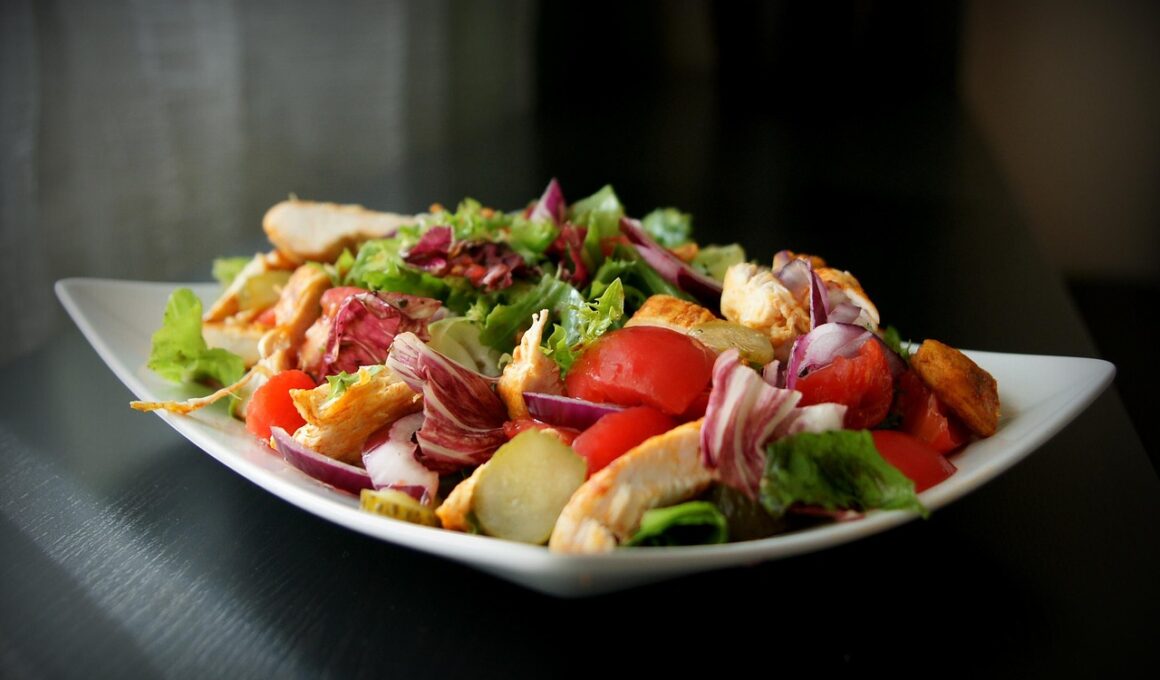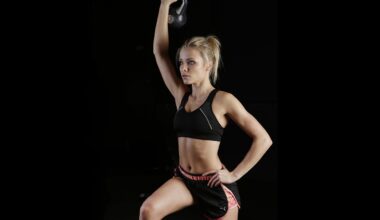How to Break Your Fast Before a Workout
Breaking a fast, especially before a workout, requires careful planning to maximize energy and nutrition. When considering how to break your fast, it’s vital to focus on foods that provide immediate energy. For example, incorporating bananas can be highly beneficial due to their natural sugars and potassium content, which helps maintain muscle function. Other options include dates and honey, both of which offer quick energy boosts. These foods can serve as convenient pre-workout snacks. Furthermore, aim to consume your first meal after fasting about 30 to 60 minutes prior to exercising to ensure proper energy levels. This timing allows your body to digest and utilize the nutrients effectively. Additionally, hydration is crucial, so remember to drink plenty of water before your workout. Adequate water intake helps optimize even minimal food intake and can enhance your overall performance. Finally, don’t forget to listen to your body; adjust your meals based on how you feel after breaking your fast before workouts, as personal nutritional needs may vary. Combining these strategies will help you break your fast in a healthy, effective way before hitting the gym.
In conclusion, choosing the right foods to break your fast can make a significant difference in workout performance. Protein-rich foods, such as yogurt or eggs, can provide sustained energy, helping you to push through endurance exercises. For instance, a serving of Greek yogurt topped with nuts or seeds can offer healthy fats and protein, promoting muscle recovery after your workout. Alternatively, a smoothie with spinach, protein powder, and berries can serve as an excellent post-fast meal, as it includes nutrients necessary for physical exertion. Pay attention to your body’s signals after consuming your pre-workout meal; for some, a light snack may be more beneficial than a larger meal. By experimenting with timing and the types of foods consumed, you can discover what optimally fuels your workouts. Remember, the goal of breaking a fast is to nourish the body while keeping it light to avoid sluggishness. Lastly, keep track of your energy levels and workout results to further tailor your approach. A thoughtful start to your day can undoubtedly lead to better performance and a healthier lifestyle overall.
Best Foods to Consume
When selecting foods to break your fast, consider a variety of options that supply essential nutrients to boost performance. Whole grains, such as oatmeal or quinoa, can provide lasting energy, along with fiber that supports digestion and overall health. Sweet potatoes are another fantastic choice; they offer complex carbohydrates that slowly release energy throughout your workout. Incorporating healthy fats from avocados or nuts can also contribute to a well-rounded meal. These fats help with vitamin absorption and provide satiation. Pairing these foods with a source of lean protein can further enhance your recovery and muscle repair. Chicken breast, fish, or tofu are superb additions that ensure your body has the fuel it requires. It’s also important to include hydration sources, like coconut water or electrolyte-rich drinks, to replace fluids lost during fasting. Assessing your workout intensity and duration can help tailor your food selection accordingly. Ultimately, the best foods are those that you enjoy and that keep you energized throughout your physical activities.
Timing is equally important when it comes to breaking your fast, particularly before workouts. Ensuring you eat at the right intervals before exercising can significantly influence your energy levels. Ideally, aim to consume your first meal after a fast about one hour before you plan to train. This timeframe allows your body sufficient opportunity to digest and absorb the necessary nutrients. If time is limited, a small snack about 30 minutes before your workout comprises fast-acting carbohydrates can also serve as an alternative. However, you should experiment with what works best for your body since everyone reacts differently to food intake and timing. After your workout, don’t neglect proper recovery hydration and nutrition. Consuming a post-workout meal rich in protein and carbohydrates will replace lost energy and support muscle recovery. Remember that recovery includes hydration as well as nutrient replenishment. If you maintain a close watch on when and what you eat, your workouts can significantly improve and amplify your results over time. Therefore, the synergy of food timing and quality is crucial for optimal performance.
Listen to Your Body
Understanding your individual needs after breaking a fast is integral to optimizing workout performance. Every body is unique, and responses to specific foods and timing will vary. Some individuals may find that they need more carbohydrates to feel energized, while others may do better with higher protein content in their pre-workout meal. It’s essential to observe how different foods affect your energy levels and workout capabilities. Keep a food journal for a short period, noting what you ate, when you ate it, and how you felt during workouts. This reflective practice can unveil patterns in your energy management, allowing for refined meal planning. Consistency is crucial, but so is adaptability. Sometimes, you may need a lighter meal or snack; other times, a more substantial meal will be necessary. Take note of how your body reacts to fast-breaking foods, especially subjective feelings such as fullness or lightheadedness before and during workouts. Ultimately, the key is to eat mindfully and adjust your fast-breaking routine according to individual preferences and experiences.
In addition to food choices and timing, the emotional aspect of breaking a fast should not be overlooked. Many people experience a psychological challenge when it comes to meal timing and food restrictions during fasting periods. Therefore, breaking your fast can be a joyful experience rather than one filled with anxiety. Create a positive relationship with food by celebrating the moments when you nourish your body with quality meals. Prepare your meals ahead of time, focusing on colorful, nutrient-dense ingredients that delight your palate. Eating should not feel like a chore but a reward after self-discipline. Consider including friends or family members in meal preparations or dining experiences to enhance the enjoyment of breaking your fast. Sharing these moments can reinforce positive attitudes toward food and eating habits, contributing to your overall well-being. Remember that wellness encompasses mental and emotional health, which are equally as important as physical health. By fostering a habit of joy and gratitude around food, you will cultivate a sustainable fasting practice.
Conclusion
Breaking your fast effectively before workouts requires the right approach to food choices, timing, and mindful eating habits. As explored, the best foods are those which support energy levels and promote hydration, while also considering individual preferences regarding taste and nutritional needs. Pay attention to how you feel post-fast when engaging in workouts, as this knowledge can shape future meal plans for optimal performance. A balance of carbohydrates, protein, and healthy fats will ensure your workouts are productive, and regularly incorporating adequate hydration can significantly enhance recovery times. Ultimately, establishing a routine around breaking your fast can yield numerous benefits not only for physical performance but also for mental well-being. Adopting these suggestions can lead to a healthier relationship with food, allowing you to enjoy the experience rather than viewing it solely as a means to an end. With practice and consistency, breaking your fast can become a seamless part of your fitness journey, aiding both workout and lifestyle goals. Embrace this journey towards healthier living and enjoy celebrating the opportunities that nutritious foods provide in your training and recovery.
As a last note, it is important to continuously educate yourself about nutrition and how your body responds to fasting. Research the latest findings on intermittent fasting and experiment with different meal compositions to see what works best for you. Communities, whether online or in person, can be a great support system for sharing experiences and recipes that align with your goals. Stay informed and adaptable, and don’t shy away from consulting with nutritionists if needed for personalized advice. This journey is about finding a balance that promotes both joy and efficiency in how you approach fasting, fueling workouts, and recovery. Being proactive about your nutritional choices will lead to improvements and provide a strong foundation for continued success in your fitness routine. Nutrition is an ever-evolving field, and staying up-to-date will empower you to make informed decisions for yourself. Remember that consistency, mindfulness, and adaptability are key components to thriving while practicing intermittent fasting alongside your workout goals.


